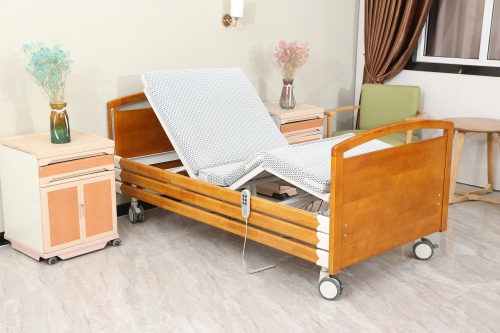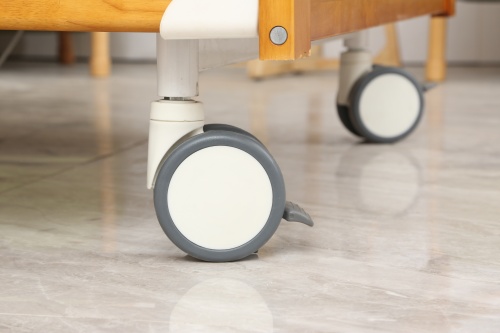From my experience, choosing an electric medical bed for home care seems easy. But it can get confusing. I’ve seen people struggle. They want a bed that feels homey for the patient. At the same time, the bed must have all the necessary medical features. I suggest you consider many details. These include looks, safety, size, and even the noise level. If you miss even one small thing, it could lead to problems later on. But, based on my observations, even very careful shoppers often overlook common mistake.

5 Mistakes To Avoid When Choosing the Best Electric Medical Bed For Home Care
1. Focusing on Price
I find many people make the mistake of focusing just on the price tag when buying an electric medical bed for home care. Sure, the cheapest bed saves money initially. However, I’ve seen it make home care much more difficult. From my experience, less expensive beds often miss important features. These features are key for patient comfort and support. This can lead to more discomfort, increased stress, and potential health issues for the person using the bed. I recommend you choose a bed that truly helps with recovery and improves quality of life. If the bed is for short-term recovery, a semi-electric hospital bed could work well. For example, if you’re caring for seniors or stroke patients, I believe an electric bed is a better long-term investment. These beds offer more functions and are easier to use, which I think is very important. Choosing a reliable medical bed manufacturer also ensures better product quality and after-sales support.
2. Forgetting to Check Electrical Part Quality
I’ve noticed many people overlook the quality of electrical components in these beds. This oversight can cause safety issues and mean more repairs down the line. In my opinion, a good quality bed will adjust height and angle with ease and without much noise. Before you make a purchase, I recommend you check the bed for:
– Cables and wires that are free of damage or fraying
– Connections that are secure and not rusty
– Control panels designed to resist moisture
– A safe and organized way to store power cords
If you see the bed moving unevenly or hear strange sounds when it’s working, I strongly advise getting a professional to inspect it. These could be signs of electrical problems.

3. Ignoring How the Mattress Fits
I want to stress that the mattress isn’t just an extra item. It’s a vital safety feature. If you use an incompatible mattress, it can lead to problems like pressure sores, poor positioning for the patient, or even falls. When you choose an electric hospital bed, I suggest you ensure the mattress is compatible. Look for:
– Pressure-relieving foam mattresses or alternating air mattresses
– Covers that are both waterproof and resistant to bacteria
– Mattresses that are the right size and firmness for the patient.
I also recommend that you check and maintain the mattress often. This keeps the patient comfortable and helps the bed last longer.
4. Not Prioritizing Safety Features
In my view, safety must be your main concern. However, I see it’s often overlooked. I believe a good electric medical bed needs these features:
– A CPR quick-release in case of emergencies
– Alarms that alert you if someone tries to leave the bed
– Locks on wheels and brakes at the foot-end
– Side rails for fall prevention
– Strong, steady construction
These aren’t just for hospital settings. From my experience, you need them at home as well. Some beds come with these features as standard. For others, you might need to add them as options.

5. Forgetting Room Size and Access Needs
Based on my experience, if you forget to measure your room or consider how you’ll access the electric mediccal bed, you might face big problems later. I recommend your room be at least 10 feet by 10 feet. This is about 100 square feet. This space allows for normal hospital bed use. It also provides room for movement and care. I also suggest the bed you pick should offer:
– Height adjustments. These help with safe and simple transfers.
– Enough room for wheelchairs, hoists, or mobility equipment
– Enough space for caregivers to move around without difficulty.
– Bed width suitable for your doors and hallways
I find this is very important for older adults. It’s also key for people recovering from surgery. And it matters for those who need rehabilitation at home.
Differences between hospital beds and medical bed for home care
If you’re picking a hospital bed or a electric medical bed for home care, I think it’s important to know their special features. You also need to see how they differ in use.
1. Functionality and Appearance
Hospital beds have a clinical design. This means they focus on being practical for medical treatments. They often look very basic. This style fits a hospital setting. Home care medical beds, on the other hand, focus more on how they look and if you can personalize them. These beds offer more stylish designs. They fit well in a home. This makes the room feel cozier. It feels less like a hospital for the patient.Grace Medy is a medical bed manufacturer. These are the hospital beds and electric medical beds for home care they produce. You can clearly see the difference in their appearances.

2. Load Bearing Capacity
- Hospital beds: Manufacturers build these to hold patients of many sizes. They can support a lot of weight.
- Home care beds: The amount of weight these beds can hold changes a lot. It depends on the model and who made it. Some top-tier home beds are as strong as hospital beds. However, I’ve noticed that basic models might not hold as much weight.
- Tip: I suggest you always check the bed’s weight limit. This helps make sure it’s safe and will last a long time at home.
3. Dimensions and Space Considerations
- Hospital beds: These beds often come in standard sizes. This helps them fit well in hospital rooms. It also makes space for medical gear. Their surfaces have sections you can adjust.
- Home care beds: You can find these in many different sizes. This helps them fit better in various room sizes. I find they are made to look less like hospital equipment. They often look more like normal furniture.
- Practical advice: My advice is to measure the space where the bed will go. Also, make sure there’s enough room to move around it and use any medical gear at home.
4. Operational Noise
- Hospital beds: These beds have many electric parts and controls. These can make more noise. This isn’t a problem in a busy hospital.
- Medical beds for home: Designers often make these with quiet motors. They run smoothly. This helps avoid bothering people in a quiet home. I believe this is quite important if you need to make adjustments at night.
- Tip: I recommend asking for a demo. Or, ask how noisy the bed is before you buy it. This helps make sure it won’t disturb sleep.
5. Control Features and Safety
- Hospital beds:
- They often have control panels on the headboard. Staff use these. They include nurse-call buttons.
- Adjustable guard rails are a common feature. They help keep patients safe. They also help with moving the patient.
- Home care beds:
- These beds give you many of the same ways to adjust them. For example, you can change the height, backrest, and leg angle. This improves comfort and helps with recovery.
- Safety rails are often available. Their design and height might be different from hospital beds.
If you look at these key differences—how they work, how much weight they hold, their size, noise, controls, and safety features—I believe you can choose a medical bed that really fits your home care situation. This will ensure it’s comfortable and useful every day.
Summary
When picking the right electric medical bed for home care, we need to think carefully about several important things. I suggest you consider how it works and its features. Also, look at its appearance and how much weight it can safely hold. Think about its size to make sure it fits your space well, and check how quiet it is when it moves. Most importantly, review its safety features.
I’ve found that taking the time to research these aspects really helps. When you steer clear of five common mistakes, I believe you can offer even better care to your loved one. This approach can also make your caregiving tasks a bit easier. I want to stress that this isn’t just about buying a piece of furniture. You’re creating a comfortable and safe space where your loved one can heal and feel dignified. I feel your careful choice here truly makes a significant impact.
